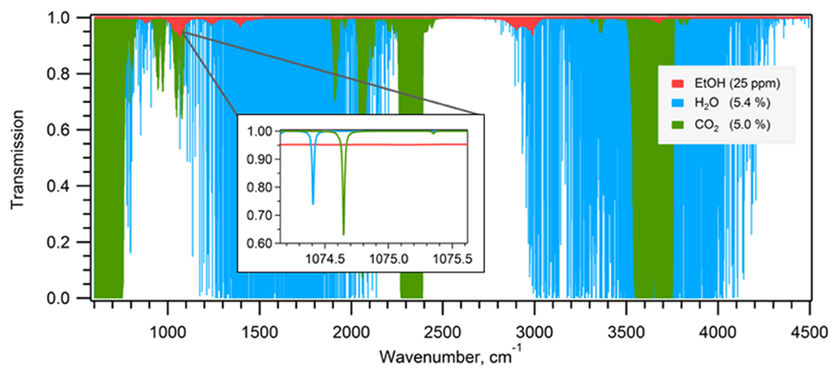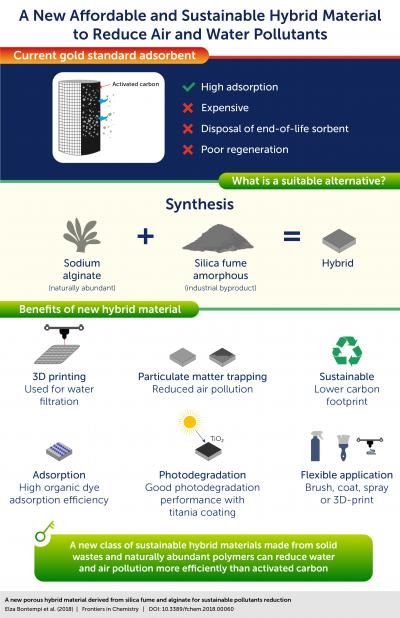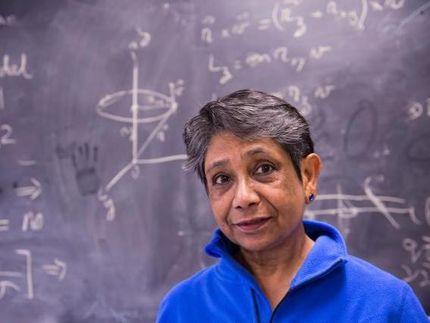Measuring the magnetism of antimatter
Researchers measure antiprotons more accurately than ever before
In a breakthrough that could one day yield important clues about the nature of matter itself, a team of Harvard scientists have succeeding in measuring the magnetic charge of single particles of matter and antimatter more accurately than ever before.
As described in a paper in Physical Review Letters, the ATRAP team, led by Gerald Gabrielse, the George Vasmer Leverett Professor of Physics, and including post-doctoral fellows Stephan Ettenauer and Eric Tardiff and graduate students Jack DiSciacca, Mason Marshall, Kathryn Marable and Rita Kalra was able to capture individual protons and antiprotons in a "trap" created by electric and magnetic fields. By precisely measuring the oscillations of each particle, the team was able to measure the magnetism of a proton more than 1,000 times more accurately than an antiproton had been measured before. Similar tests with antiprotons produced a 680-fold increase in accuracy in the size of the magnet in an antiproton.
"That is a spectacular jump in precision for any fundamental quality," Gabrielse said, of the antiproton measurements. "That's a leap that we don't often see in physics, at least not in a single step."
Such measurements, Gabrielse said, could one day help scientists answer a question that seems more suited for the philosophy classroom than the physics lab – why are we here?
"One of the great mysteries in physics is why our universe is made of matter," he said. "According to our theories, the same amount of matter and antimatter was produced during the Big Bang. When matter and antimatter meet, they are annihilated. As the universe cools down, the big mystery is: Why didn't all the matter find the antimatter and annihilate all of both? There's a lot of matter and no antimatter left, and we don't know why."
Making precise measurements of protons and antiprotons, Gabrielse explained, could begin to answer those questions by potentially shedding new light on whether the CPT (Charge conjugation, Parity transformation, Time reversal) theorem is correct. An outgrowth of the standard model of particle physics, CPT states that the protons and antiprotons should be virtually identical – with the same magnitude of charge and mass – yet should have opposite charges.
Though earlier experiments, which measured the charge-to-mass ratio of protons and antiprotons, verified the predictions of CPT, Gabrielse said further investigation is needed because the standard model does not account for all forces, such as gravity, in the universe.
"What we wanted to do with these experiments was to say, 'Let's take a simple system – a single proton and a single antiproton – and let's compare their predicted relationships, and see if our predictions are correct," Gabrielse said. "Ultimately, whatever we learn might give us some insight into how to explain this mystery."
While researchers were able to capture and measure protons with relative ease, antiprotons are only produced by high-energy collisions that take place at the extensive tunnels of the CERN laboratory in Geneva, Gabrielse said, leaving researchers facing a difficult choice.
"Last year, we published a report showing that we could measure a proton much more accurately than ever before," Gabrielese said. "Once we had done that, however, we had to make a decision – did we want to take the risk of moving our people and our entire apparatus – crates and crates of electronics and a very delicate trap apparatus – to CERN and try to do the same thing with antiprotons? Antiprotons would only be available till mid-December and then not again for a year and a half.
"We decided to give it a shot, and by George, we pulled it off," he continued. "Ultimately, we argued that we should attempt it, because even if we failed, that failure would teach us something." In what Gabrielse described as a "gutsy" choice, graduate student Jack DiSciacca agreed to use this attempt to conclude his thesis research, and new graduate students Marshall and Marable signed on to help.
Though their results still fit within the predictions made by the standard model, Gabrielse said being able to more accurately measure the characteristics of both matter and antimatter may yet help shed new light on how the universe works.
"What's also very exciting about this breakthrough is that it now prepares us to continue down this road," he said. "I'm confident that, given this start, we're going to be able to increase the accuracy of these measurements by another factor of 1,000, or even 10,000."
Other news from the department science

Get the chemical industry in your inbox
By submitting this form you agree that LUMITOS AG will send you the newsletter(s) selected above by email. Your data will not be passed on to third parties. Your data will be stored and processed in accordance with our data protection regulations. LUMITOS may contact you by email for the purpose of advertising or market and opinion surveys. You can revoke your consent at any time without giving reasons to LUMITOS AG, Ernst-Augustin-Str. 2, 12489 Berlin, Germany or by e-mail at revoke@lumitos.com with effect for the future. In addition, each email contains a link to unsubscribe from the corresponding newsletter.
Most read news
More news from our other portals
Last viewed contents

Quantum cascade laser measures ethanol - Precision work for large molecules
Gifted guardians of life and the environment: Europe honours the inventors of the year
Merck Completes Squeeze-Out of AZ Electronic Materials
First-hand expertise at the biggest ever analytica Vietnam
Styron Announces Plans to Change Company Name to Trinseo

Tiny magnets mimic steam, water and ice

A pioneering spectrometer for hard X-rays at European XFEL - "The new spectrometer opens up completely new spectroscopic possibilities at high X-ray energies"
Stora Enso to boost green energy generation at Maxau Mill - Investment volume of 25 million EUR
LANXESS to increase prices for its Baypren (CR) products





























































